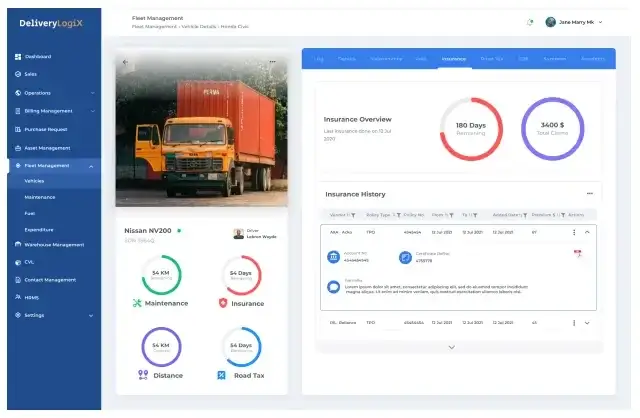

Abstract:
This case study delves into the challenges faced by a courier company managing its fleet
operations. The company grappled with fragmented information, as crucial data such as road
tax, insurance, fuel management, maintenance, inspections, and real-time driver movement
were scattered across various platforms. The case outlines the steps taken to centralize and
automate these processes, resulting in improved efficiency, cost savings, and better overall fleet
management.
Introduction:
The Courier company, with a fleet of 50 vehicles, faced challenges in consolidating essential
data for effective management. Road tax , insurance details ,summons and incident reports
were stored separately, fuel and maintenance information was managed in Excel files,
inspections were conducted manually, and there was no centralized system to monitor the
real-time movement of drivers.




Challenges:
a. Data Fragmentation: Critical information related to road tax, insurance, summons , incident
reports , fuel, maintenance, and driver movements was scattered across different platforms and
files.
b. Manual Processes: Inspections were conducted manually, leading to potential errors and
inefficiencies
c. Lack of Real-time Visibility: The absence of a centralized system made it challenging to
monitor the real-time movement of drivers
Implementation Steps:
a. Integrated Fleet Management System: Deployed a comprehensive Fleet Management
System (FMS) that integrated road tax, insurance, fuel management, and maintenance modules
into a single platform.
b. Digitized Inspections: Implemented a mobile app for digital inspections, allowing for real-time
data capture and instant reporting.
c. Fuel Management Automation: Integrated fuel tracking with the FMS, enabling automated
data entry and reporting.
d. Centralized Dashboard: Developed a centralized dashboard providing real-time visibility into
the movement of drivers, including GPS tracking and trip history.




Outcomes:
a. Data Centralization: Road tax, insurance, fuel management, and maintenance data were
centralized, reducing data silos and improving accessibility.
b. Efficiency Improvements: Automated fuel management and digitized inspections led to
increased operational efficiency, reducing manual errors and saving time.
c. Cost Savings: Centralized data and streamlined processes resulted in cost savings through
better resource allocation and maintenance planning
d. Real-time Visibility: The single-screen dashboard provided real-time insights into driver
movements, enabling better decision-making and responsiveness.


Conclusion:
The successful implementation of a comprehensive Fleet Management System addressed the
challenges faced by the transportation company. The case study emphasizes the importance of
digital transformation in optimizing fleet operations, improving efficiency, and achieving cost
savings. Centralized data and real-time visibility contribute to better decision-making and
enhanced overall fleet management.